Are you fed up with feeling weak and lethargic? It could be because you are not getting enough protein in your diet! Plant-based eaters may struggle to find appropriate vegetarian protein sources.
But do not worry! We’ve put together a list of the top 10 vegetarian protein sources to help you create a strong and healthy physique.
These nutrient-dense foods, ranging from lentils to quinoa, are delicious and simple to integrate into your diet, keeping you energized and strong.
Table of Contents
Importance of Protein in a Vegetarian Diet
- Proteins are the main source of strong muscles. It aids in muscle development and repair. Inadequate protein can lead to weakness and fatigue. It’s necessary for active individuals and athletes to consume protein every day.
- It minimizes blood sugar rises and falls by providing a gradual and consistent supply of energy. Protein helps to maintain consistent energy levels throughout the day.
- Protein helps in the release of antibodies and immune cells that protect us against infections and diseases.
- Hormones are made from protein. Hormones maintain our bodily functions like metabolism, moods, and growth.
- People who want to reduce weight go for a high-protein diet since it reduces appetite and gives a feeling of fullness.
- It’s important to eat a good amount of protein to have healthy skin, hair, and nails.
- Proteins are also important in maintaining bone strength and density. Insufficient protein leads to a risk of fractures and osteoporosis.
Proteins are necessary for hemoglobin formation, overall health, and vitality.
Top 10 Vegetarian Protein Sources
1. Lentils

Common types of lentils are Moong dal, Masoor dal, and Toor dal. They are rich in proteins as well as nutrients like iron, vitamins, minerals, antioxidants, and fiber.
It also has a low glycemic index, which is required to manage blood sugar levels. Lentils can be included in a salad, lentil soup, or mixed with Indian masalas to make flavorful dal.
2. Quinoa
Q
Quinoa is a superfood because it has a complete protein supply of all 9 essential amino acids. It is rich in fiber, gluten-free, antioxidants, a low glycemic index, and healthy fats, contributing to heart health.
Quinoa is a versatile food that can be used in salads, soups, and as a side dish.
3. Tofu and Tempeh
Tofu is low in calor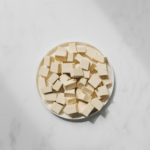
It’s an excellent source of protein, extensively used in vegan protein sources. Tofu is added to Indian curries. It can be added to soups, salads, stir-fried, or grilled.
4. Nuts and Seeds

Nuts can be enjoyed in a variety of ways, such as as snacks, smoothies, or for breakfast.
5. Green Peas
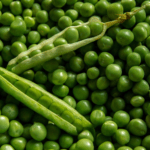
Green peas can be used to make Indian curries,Peas Pulao, salads, soups, stews, or enjoyed as a side dish.
6. Paneer (Cottage Cheese)
Paneer, also called cottage cheese, has high protein, calciu
Paneer can be simply added to salads and also to many Indian dishes like Palak Paneer, Paneer tikka, Paneer Bhurji, Matar Paneer, Shahi Paneer, and Paneer Pakora
7. Yogurt and Curd
Greek yogurt is generally high in protein.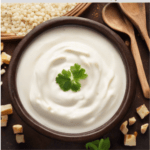
Yogurt is one of the best probiotics because it helps promote a healthy gut microbiome and is good for digestive health. Yogurt can be used as part of meals, smoothies, snacks, and Indian Raita.
8. Chickpeas (Chana)
C
Chickpeas are consumed whole, ground into flour, or mashed like dips. Roasted chickpeas can be taken as crunchy snacks or added to salads. Chana masala is a famous Indian curry.
9. Green Gram (Moong)
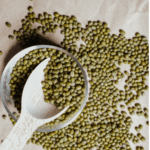
Green gram can be used in a variety of dishes, either in cooked or sprouted form. It can be enjoyed as refreshing sprouted moong salads, Moog Dal khichdi.
10. Soy Products (Soy Chunks and Granules)
So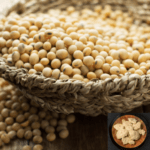
Soy products are good at absorbing flavors from the spices and ingredients they are cooked with. Soy products can be used to prepare curry, salads, soy cutlets, and soy granule tacos.
Practical Tips for Adding Protein to Your Diet
- Plan your meals: Make a high-protein meal plan with a range of protein-rich foods.
- Experiment with recipes. Try new recipes with legumes, lentils, tofu, and other high-protein ingredients.
- Snack Smart: Have nuts and seeds on hand for a quick protein boost.
- Use Dairy Effectively: Include yogurt and paneer in your meals for extra protein.
- Mix It Up: Include a variety of protein sources in your meals to ensure you get a full range of amino acids.
A high-protein vegetarian diet has various health benefits, like increased muscle strength, weight control, immune system function, and heart health. Vegetarians can get these benefits by including a range of plant-based protein sources in their diets while maintaining a healthy balance.
So, now that you know about vegetarian protein sources, what are you waiting for? Plan how you will include them in your meal. Please share your recipes in the comments section below.
